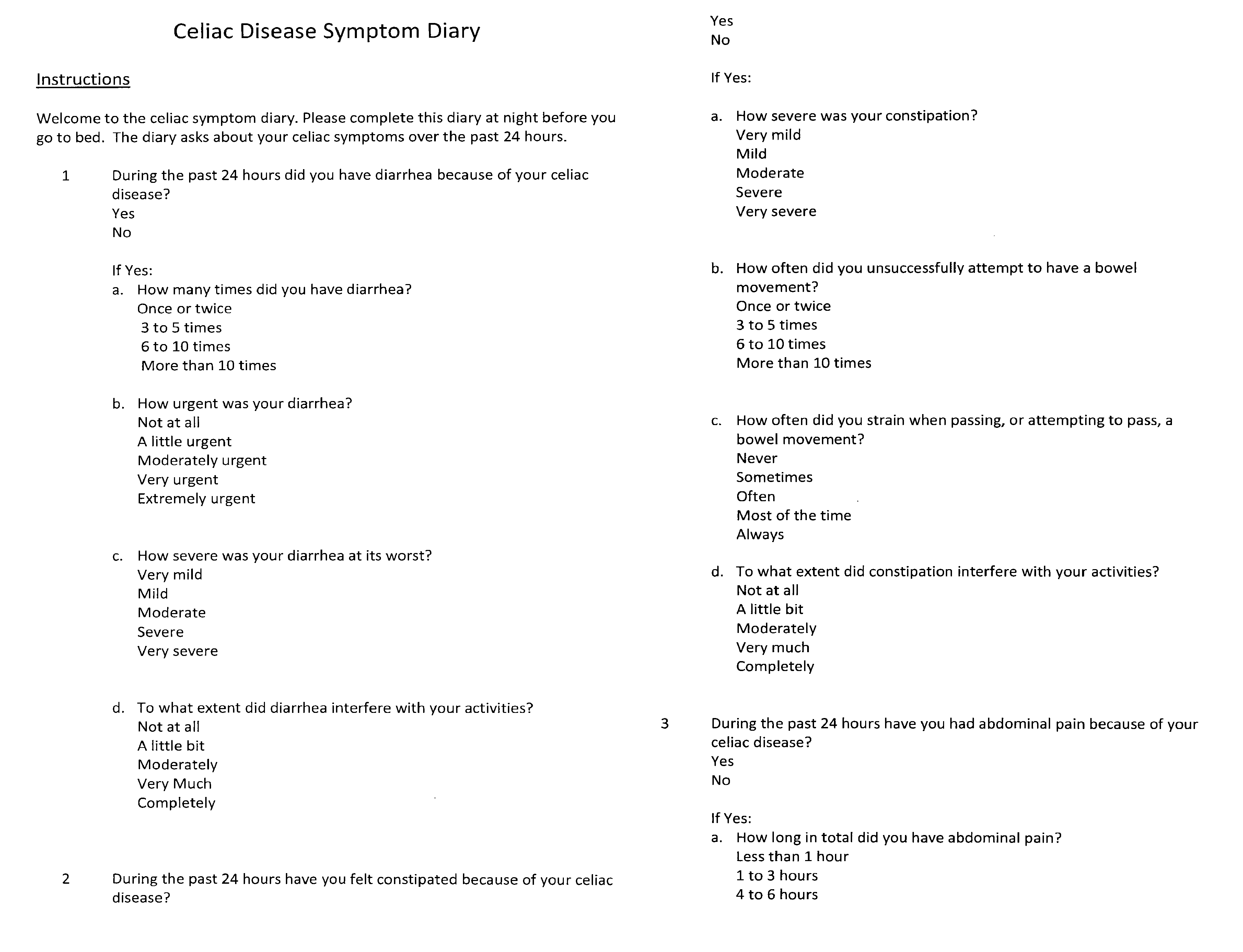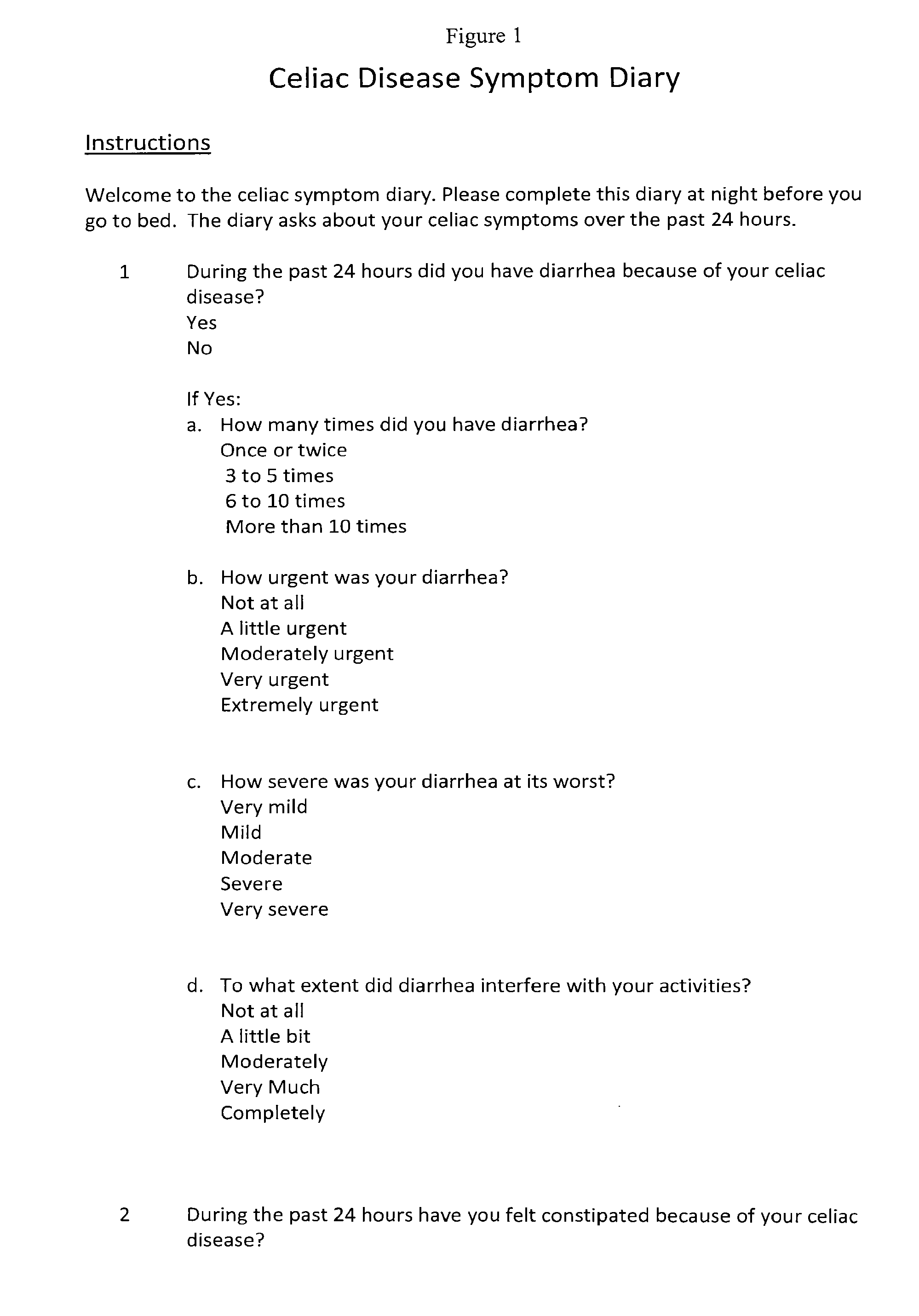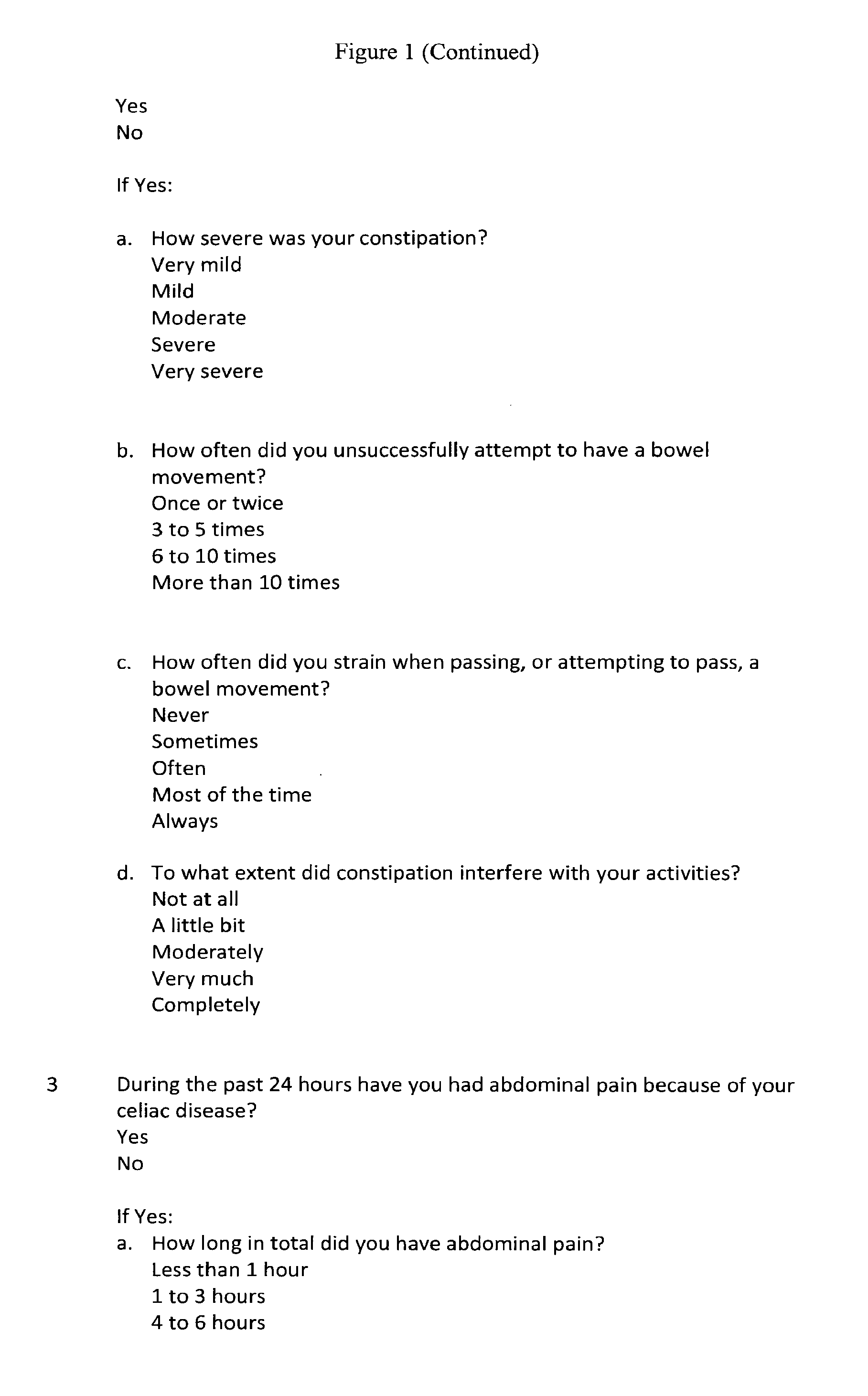Patient reported outcome instrument
a technology for reporting outcomes and patients, applied in the field of patient reporting outcomes, can solve the problems of not being able to accurately reflect the symptom profile of celiac patients, not being as readily available as other foods, not being able to achieve the effect of gfd, and being difficult to maintain gfd, etc., and achieve the effect of monitoring the efficacy
- Summary
- Abstract
- Description
- Claims
- Application Information
AI Technical Summary
Benefits of technology
Problems solved by technology
Method used
Image
Examples
example 1
Celiac Disease Symptom Diary (CDSD)
[0087]The CDSD is a daily diary administered via an Interactive Voice Response System (IVRS) across a seven-day period. The CDSD assesses 10 common celiac symptoms: diarrhea, constipation, abdominal pain, bloating, gas, nausea, skin rash, fatigue, headache and difficulty thinking clearly. The presence or absence of each of the 10 symptoms over the previous 24 hours is first reported. If the respondent indicates the presence of a particular symptom, contingent follow-up questions assess symptom severity and impact on daily functioning. The number of follow-up questions varies from one to four depending to the symptom assessed. Response options vary from a 0-10 numeric rating scale to 0-4, 1-4 or 1-5 adjectival likert scales.
[0088]Patients are asked to complete the CDSD for 7 consecutive days around the same time each evening before going to bed. The diary can only be completed one time in any 24 hour period. If patients miss a day completing the dia...
example 2
Administration of a CDSD
[0094]A physician administers the CDSD to a celiac disease patient under her care.
[0095]The patient is seen for an annual check-up. In order to determine the current disease status, the physician measures tTG-IgA celiac disease serologies, as well as the CDSD to assess symptoms on a GFD.
[0096]The patient receives an invitation to access the CDSD via a secure cloud-based site. The patient logs on once per day, and addresses each serious of questions asked. The patient continues to fill out the daily questionnaires until he / she is notified that sufficient data has been captured, and that the information will be analyzed and sent to his / her physician. The required duration of responses is based on frequency and severity of symptoms recorded. The minimum time period to collect symptom responses is one week, but may extend to 2 weeks, 4 weeks, 6 weeks, or 8 weeks, or longer based on frequency and consistency of symptoms recorded.
[0097]The physician receives a scor...
PUM
| Property | Measurement | Unit |
|---|---|---|
| time | aaaaa | aaaaa |
| time | aaaaa | aaaaa |
| time | aaaaa | aaaaa |
Abstract
Description
Claims
Application Information
 Login to View More
Login to View More - R&D
- Intellectual Property
- Life Sciences
- Materials
- Tech Scout
- Unparalleled Data Quality
- Higher Quality Content
- 60% Fewer Hallucinations
Browse by: Latest US Patents, China's latest patents, Technical Efficacy Thesaurus, Application Domain, Technology Topic, Popular Technical Reports.
© 2025 PatSnap. All rights reserved.Legal|Privacy policy|Modern Slavery Act Transparency Statement|Sitemap|About US| Contact US: help@patsnap.com



